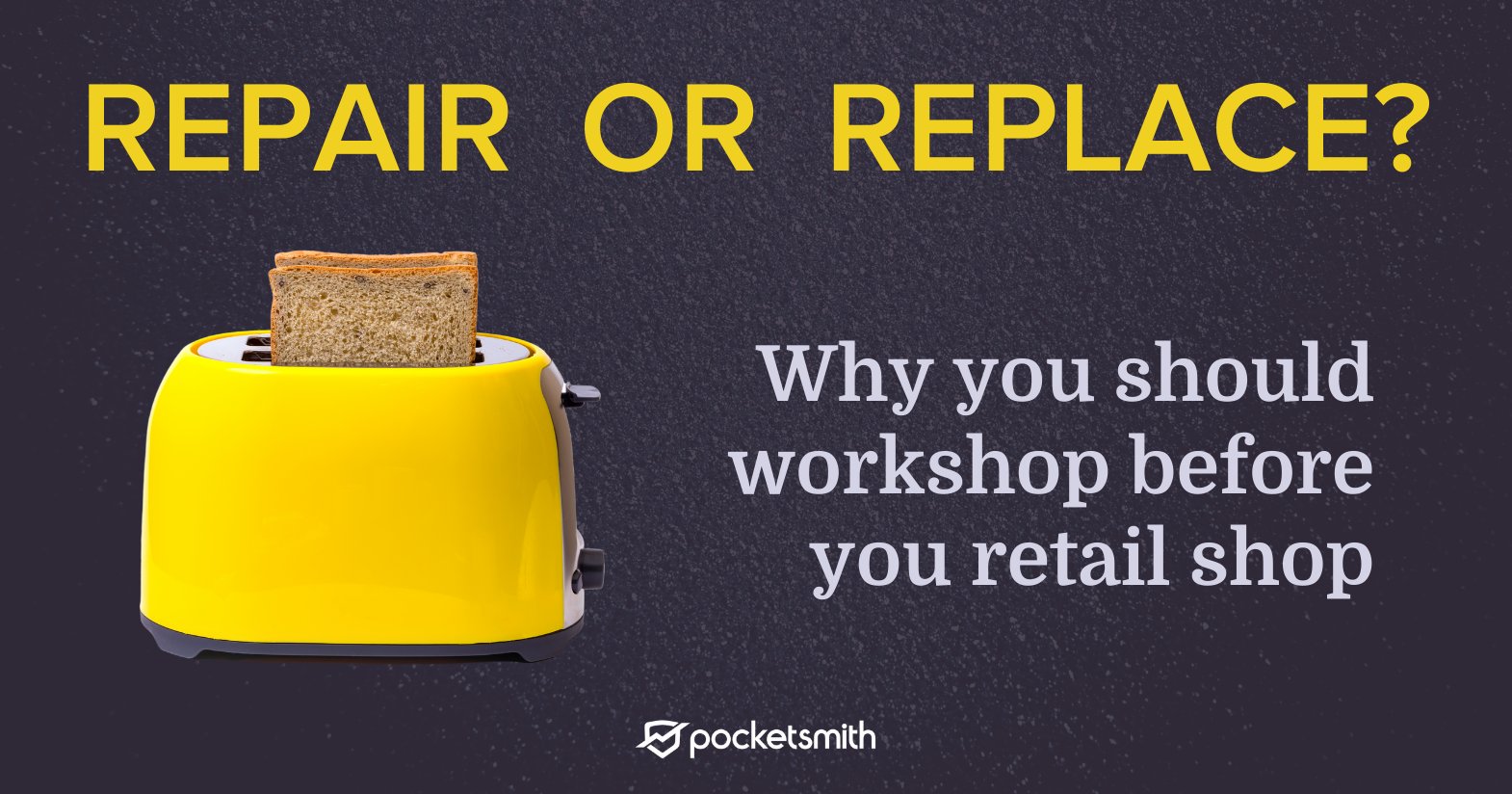
You jam the toaster handle down, but the bread pops up again and again, like a doughy movie villain who won’t stay down. Yep, the toaster is broken. Another appliance gone too soon. Emotions flood your mind: disappointment, annoyance, hunger.
Then the dilemma. On one hand, you can buy a new toaster! Thrilling! Consoling! On the other hand, what about the broken toaster? It looks so new. Hardly a day over the 12 month warranty period. But repairing it sounds difficult. To your 21st century brain, whatever makes the toast pop at exactly the right time seems like the lost wizardry of the ancients. So it’s off to the shops you go.
Tired of repeated trips to the appliance store? Confused about whether to trash or recycle the broken blender? Has your basement turned into a graveyard of unusable gadgets?
If throwaway culture gives you the sustainability blues, then take heart. A new culture is rising like a warm and perfectly crisp slice of toast: the culture of self-repair.
People are literally marching in the streets for your right to repair. Communities are assembling to give you the power to fix stuff. In this article, we look at why it is even necessary to fight for your right to repair and why reaching for a screwdriver instead of your credit card may be better for you, your community, and the planet.
It’s not just your imagination – appliance life-spans really are shrinking. According to a recent EU study, the share of large household appliances replaced within the first five years of use grew from 7% of total replacements in 2004 to 13% in 2013.
The study also reported a remarkable increase in the proportion of appliances sold to replace defective units, from 3.5% in 2004 to 8.3% in 2012.
Appliance life-spans are only part of the issue – it’s also a people problem. A third of replacements in the study were by those who wanted to upgrade even though their existing appliance still worked. Whether due to shrinking appliance life-spans or throwaway culture, the resulting waste is a huge problem.
Each year the mountain of e-waste grows by 53 million tonnes. That’s the equivalent of every person on Earth lining up to throw several toasters onto the trash heap. Only 15-20% of this is recycled, according to Right to Repair, a European coalition of organizations advocating for a right to repair and obligations to design products for repair.
The tragedy is that much of that waste could have been fixed and reused, but for a single part or a bit of know-how.
What about bringing your broken toaster to the recycling center?
While diligently leaving our recycling on the curb for collection is great, we probably give ourselves too much credit for doing so. Recycling uses many resources and only recuperates a small amount of the materials and energy used in the making of stuff. To really make a difference, we need to rewind to the moment we chose to replace over repair.
Taking an electric drill or hairdryer off the shelf generates waste at both ends: from the energy use and mineral extraction to make the new product, the energy devoted to recycling it, and the toxic chemicals that leach from the parts that go to waste.
Repair is worth aiming for. Fixing appliances yourself when you can is a way of aligning your spending habits with the way you want to live your life. And help with repair is emerging. Repair cafes and online repair communities are popping up globally as a way to empower communities and save the planet.
Rethinking and pushing back this cycle could relieve a lot of pressure on our environment. The European Environmental Bureau suggests that “extending the lifetime of all washing machines, notebooks, vacuum cleaners and smartphones in the EU by just one year would save around 4 million tonnes of carbon dioxide (CO2) annually by 2030, the equivalent of taking over 2 million cars off the roads for a year.”
It may be that people never stopped wanting to repair, it just became more difficult. One survey found that 77% of European Union citizens had made an effort to repair broken appliances before buying a replacement. So why has throwaway culture infiltrated our relationship with the toys and tools of our daily life, even if we have the inclination to fix?
Unfortunately, extending the life of your favorite gadget is a hard road. Our consumption-based world is stacked in favor of an endless cycle of making and throwing. Repairing has become expensive and inconvenient by design, in a process known as planned obsolescence.
One way retailers can sell us things at great low prices is by dispensing with the costs of repair and parts. Replacing your broken item is more efficient for the retailer than sending it for repair or finding the parts for it, so they do not give their customers the option, as found by Consumer New Zealand. We find ourselves in the trap of buying new things even if we feel bad about it.
Cuba’s fascinating repair culture illustrates how culture and economics determine our consumer mindset. Ingenuity is part of Cuba’s culture due to the extreme hardship caused by sanctions and Cuba’s political and economic history, and a high degree of know-how in skills like engineering. Replacing a broken toaster is not an option; in fact, the toaster may already be cobbled together using parts from other machines.
Contrast this with the BBC program The Repair Shop, in which people bring in beloved items that have fallen on hard times to be resurrected by a rare breed of craftspeople. Here, the ability to repair and restore is considered so special that it sustains a top-rated television program. The show evokes a sense of wonder and sentimentality about the pre-consumer era. At the end of each show, the restored item is revealed to show the emotional restoration that can come from repair.
But is it possible to turn back the clock on our consumer culture?
A coalition of European organizations is advocating for people to have a right to repair and for manufacturers to have obligations to design products for repair. Right to Repair believes that repair is an essential part of wider environmental, climate change and socio-economic issues. The coalition raises awareness of barriers and opportunities for repair and pushes for specific government policies – and yes they march in the streets for this.
From giving laypeople access to repair guides and spare parts, to seeking rating systems for durability and repairability, similar to the energy ratings that already guide people to energy-efficient products, results are beginning to show.
The first European repair regulations came into force on 1 March 2021. Now, four types of electrical appliances will have to be made more easily repairable and longer-lasting: washing machines, dishwashers, fridges and displays (including TVs).
Yet the new EU regulations are a small start and the campaigns continue. Manufacturers are still allowed to steer consumers to throw away and replace. Spare parts and repair information can still be restricted to professionals. They may also be ‘bundled’, so repairers need to buy a whole new component like a whole wheel instead of just its bearings.
Importantly, a hopeful trend arising from the right to repair movement is the restoration of repair skills within the community.
Rewind to the broken toaster. The toaster’s handle won’t stay down. Instead of frustration, you feel curiosity. You slowly push the handle down and up, wondering what makes it stay down, what makes the wires glow red until the toast pops by itself. You picture yourself, not boasting to your mates about new toaster specs (lame!), but telling your family how you repaired the old one by yourself (heroic!).
In place of your basement appliance graveyard, a wooden desk and a toolbox. Family members receiving their repaired possessions, a grateful tear welling in their eye, just like on The Repair Shop. Is this modern-day fantasy or something anyone can reach for?
Firstly, repair is worth aiming for. Fixing appliances yourself when you can is a way of aligning your spending habits with the way you want to live your life – what some call mindful spending. While not always the easiest option, self-repair may be a happier option. Less of the high rushes and low regrets of impulse spending disguised as necessity, more of the sustained fulfillment that comes from self-reliance and empowerment.
Secondly, help with repair is emerging. Repair cafes, for example, are popping up globally as a way to empower communities and save the planet. Repair cafes intend to be voluntary and educational – people are encouraged to stay and watch the repair so they can pick up new skills and maybe do it themselves the next time. As for what can be repaired – that is only limited by the skills in the community – from clocks to shoes, jewelry, toys and vacuum cleaners.
Since the first one started in Amsterdam in 2009 by repair campaigner Martine Postma, their number has grown to an estimated 1,500 community repair cafés in 33 countries. The idea has spread all the way to PocketSmith’s hometown of Dunedin, New Zealand, where a workspace was set up as part of a community spring clean.
Online repair communities have also emerged. Ifixit is a crowd-sourced repair manual for everything. Anyone can contribute repair manuals and edit the manuals, and anyone can access the information for free. Ifixit also explores what companies tend to keep hidden from view – you can see someone take apart the latest gadget and see hidden features in a ‘teardown’.
So the next time an appliance fails you, don’t let it be for the last time.

Consider giving it another chance. Google ‘fix toaster’ instead of ‘buy toaster’. See if your local community center has a repair group or DIY class. Ask your retailer for a repair option and let them know that you’d much prefer that option. And if you do manage to fix it, share your success and keep the movement going!

David loves the challenge of turning complex jargon into great stories. His vice is being unable to read a notice without re-writing it in his head. Most likely to be found taking his coffee for a walk around Dunedin or at the park bowling terrible medium pacers to his two sons.